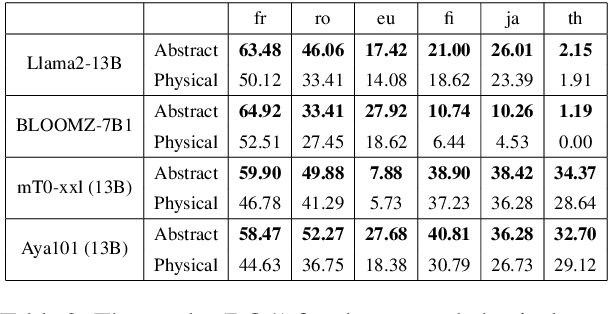Concept Space Alignment in Multilingual LLMs
Paper and Code
Oct 01, 2024



Multilingual large language models (LLMs) seem to generalize somewhat across languages. We hypothesize this is a result of implicit vector space alignment. Evaluating such alignment, we see that larger models exhibit very high-quality linear alignments between corresponding concepts in different languages. Our experiments show that multilingual LLMs suffer from two familiar weaknesses: generalization works best for languages with similar typology, and for abstract concepts. For some models, e.g., the Llama-2 family of models, prompt-based embeddings align better than word embeddings, but the projections are less linear -- an observation that holds across almost all model families, indicating that some of the implicitly learned alignments are broken somewhat by prompt-based methods.
 Add to Chrome
Add to Chrome Add to Firefox
Add to Firefox Add to Edge
Add to Edge